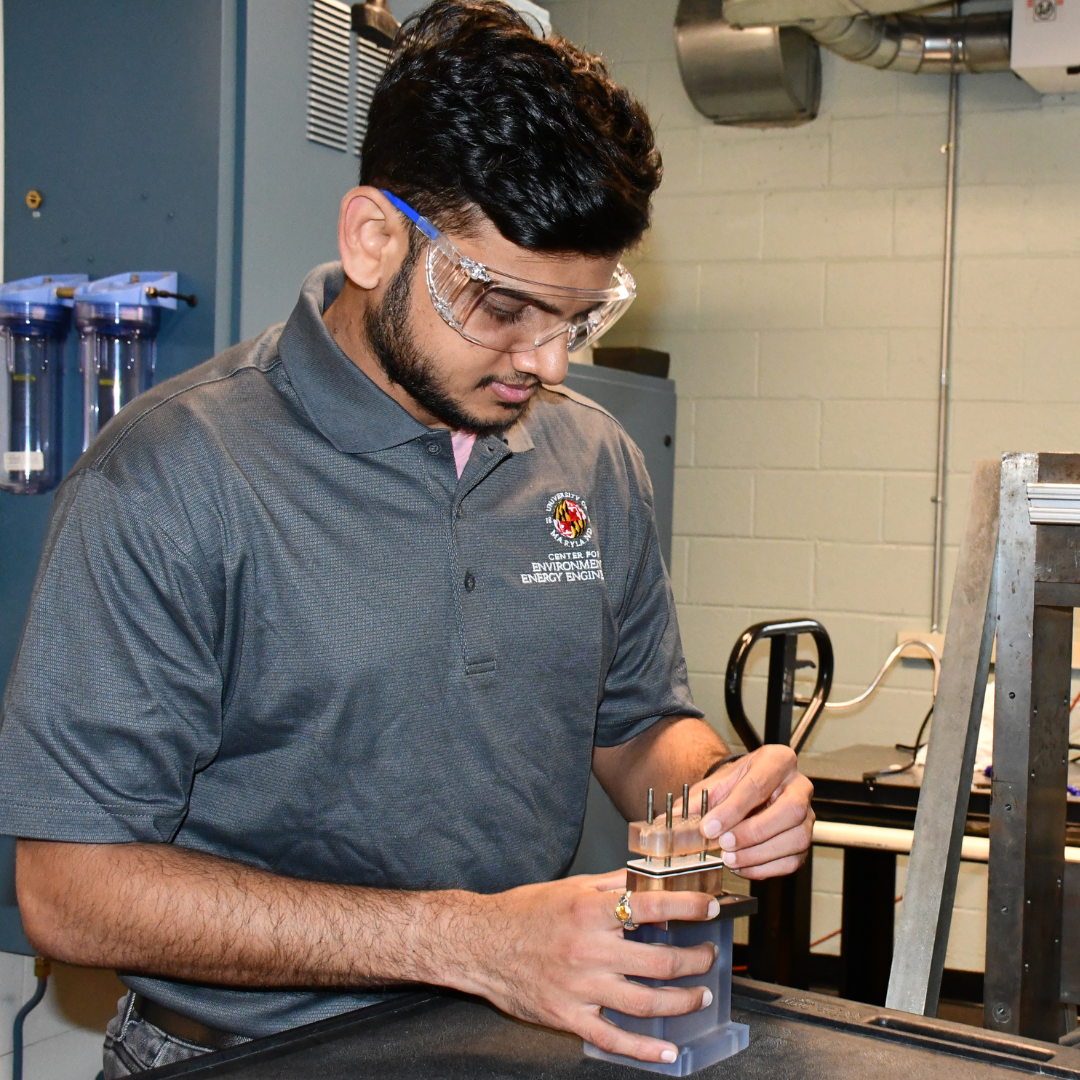News Story
Fifteen Minutes with Dr. Satyandra K. Gupta
Reprinted from the November 22 issue of Spatial Dimensions, an on-line magazine on CAD/CAM.
The following is an interview with Dr. Satyandra K. Gupta, an Associate Professor in the Mechanical Engineering Department and the Institute for Systems Research at the University of Maryland. Dr. Gupta has been using the 3D ACIS Modeler for his research and in his classroom since 1991. His research deals with developing new algorithms and representations for creating next-generation computer-aided design and manufacturing systems that can reduce time-to-market, enable cost effective small batch manufacturing, and facilitate manufacturing of geometrically complex heterogeneous objects. He has authored or co-authored more than eighty articles in journals, conference proceedings, and book chapters, and has won many honors and awards for his research.
In this issue of Spatial Dimensions, we've asked Dr. Gupta about his experience with ACIS over the years, as well as his thoughts on the future trends of CAD/CAM.
To read more about Dr. Gupta, visit his Web site: www.enme.umd.edu/facstaff/faculty/assistant/sgupta.html
When did you start using ACIS?
We started using ACIS in 1991. The two kernels we considered at the time were Parasolid and ACIS. At that time, since Parasolid was working with C and ACIS was using C++, we concluded the coding for ACIS would take much less time for code development of demo systems. Primarily, we wanted something with which we could demonstrate our research, and it would take us much less time to set up a system with ACIS.
What version are you currently using?
Currently we are using version 7. We upgrade just about every year during the summer. We don't switch versions during the academic year because training would be too time consuming. I think we will upgrade this summer to the latest version.
Why do you continue to use ACIS?
Primarily I like the fact that it has a wide variety of rich, easily callable functions, there are class structures, and it's object-oriented. Our primary consideration is that we can show people very quickly how ideas work. The main feature that we look for is speed. ACIS is ideal for that, because you can prototype faster with ACIS compared to anything else that is out there.
What advantages does it present for both research and the classroom?
From the research point of view, it has a very rich set of function calls, which eliminates a lot of custom coding when prototyping. The functionality is already there. In terms of the classroom, students like learning ACIS since it's a skill set that will make them more attractive to all the companies that use ACIS after they graduate.
You've had quite a long relationship with Spatial. Given this perspective, how has ACIS grown over the years?
Three aspects jump out at me. One deals with the robustness. When I started using ACIS, in my first serious program in the summer of 1991, I believe it was not really robust. When doing a complex set of computations or shapes, I often received a response from the kernel saying, "this operation cannot be performed." And when I say complex shapes, these are in '91 terms. Significantly simple things by today's standards, such as taking a cube, rotating it a few times and intersecting it with itself. About ten operations or so, and it would crash. That was '91. Lately, I'm not hearing any complaints from my students. If there's a problem with their computations, ACIS has not been held at fault. So, there's been a dramatic improvement in robustness.
Second thing, when I first started using ACIS, there was no support for graphical user interaction. At the time, when I asked Spatial about this, I was told that I would need to use another product in conjunction for this purpose. Which is fine, but you're learning a whole new product with its own learning curves and so on. One nice thing about the version we're using now, is that it comes with the Scheme interface, which supplies a sufficient amount of visualization for fast prototyping.
The third thing is translator support. When we first started using ACIS, we generally had to find an ACIS-enabled CAD application and model everything from there. Every now and then, someone would send us a part from, say, PRO/ENGINEER, and then we wouldn't be able to do a demo on that, we'd have to go back and remodel the part using an ACIS-compatible product. But now, with the Spatial translators, things have really worked out nicely. We can transfer data to whatever intermediate version works out, and then just use that.
Have you been pleased with the opportunities presented by Spatial's University Program?
Absolutely. I would not have been able to do much of my research if Spatial did not make ACIS available. In terms of developing those prototypes, it would have taken years rather than months.
What's your prediction for the future of CAD/CAM? What's on the horizon?
Personally, the one area that I feel excited about is the increasing amount of data being generated by the use of 3D scanners. 3D scanners are getting to be pervasive. Once this data is collected, you can do a whole variety of nice things. So, CAD/CAM, I think, will be working more and more with these systems. The paradigm will shift a little bit, because until now, the process has been sitting down and designing something in a CAD system and then giving it to the CAM system, and so on and so forth. That mode of operation will continue, but another path will be created, particularly things in places such as the medical industry, which is always pushing technology farther. For example, say you want to create a hearing aid. You can scan their inner ear, and a custom hearing aid can be designed simply by using that scanned data, and then that drives the CAM system. I really think 3D scanners are going to take CAD/CAM to a new level.
What lies in your future? Do you see yourself branching in a particular direction?
A lot of my work has been in the geometric reasoning area. In the future I think I will be increasingly moving into the spatial synthesis area, where we say, ok, here are a set of constraints, how do we automatically synthesize the shape? That's another area that I think I'm heading into.
"Fifteen Minutes with?" will be a regular feature in Spatial Dimensions. Look to future issues for more perspectives from Spatial partners and industry personalities.
Published December 22, 2002









